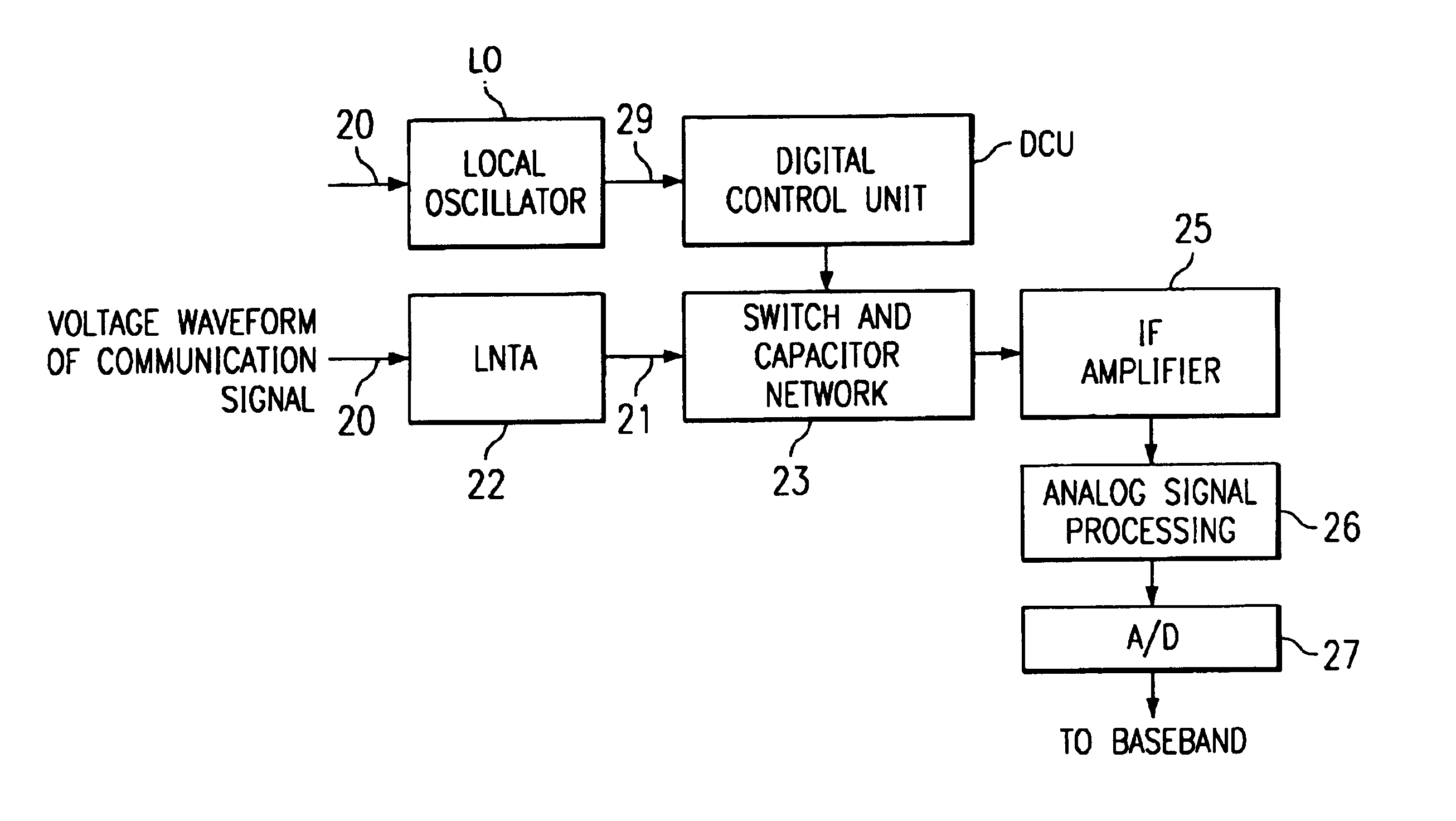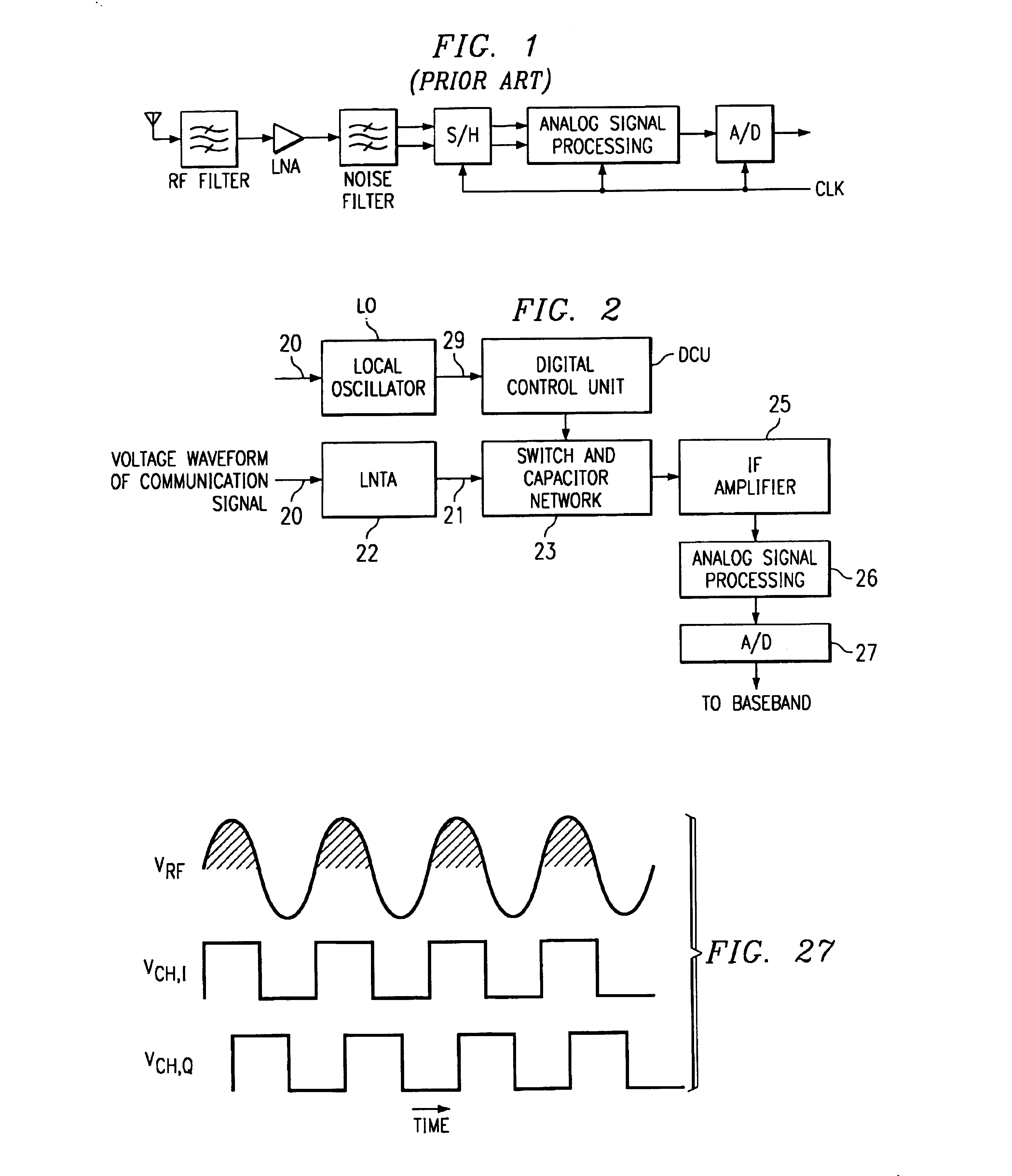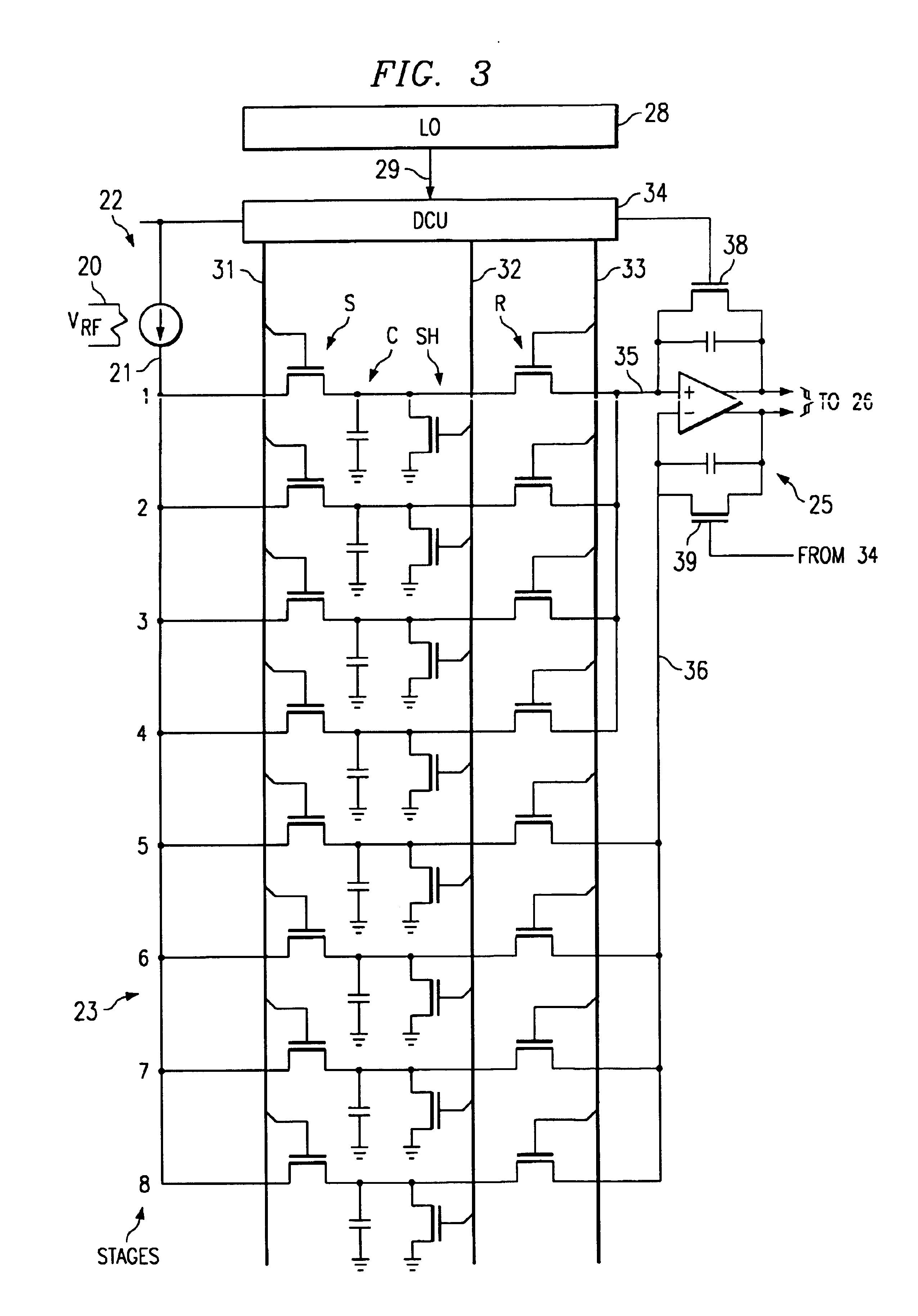Subsampling communication receiver architecture with relaxed IFA readout timing
a receiver and subsampling technology, applied in the field of subsampling receiver architectures, can solve the problems of poor linearity, sensitivity to clock jitter, and inability to directly extend to general modulation schemes
- Summary
- Abstract
- Description
- Claims
- Application Information
AI Technical Summary
Problems solved by technology
Method used
Image
Examples
Embodiment Construction
[0041]FIG. 2 diagrammatically illustrates pertinent portions of exemplary embodiments of a subsampling communication receiver according to the invention. The subsampling receiver architecture of FIG. 2 includes an input 20 for receiving the voltage waveform of a communications signal, for example an RF communication signal. This voltage waveform is applied to a low noise transconductance amplifier (LNTA) 22 which can use conventional techniques to transform the voltage waveform at 20 into a corresponding current waveform at 21. In some embodiments, the LNTA 22 can include a conventional low-noise amplifier (LNA) followed by a conventional transconductance amplifier (TA). The current waveform at 21 is applied to a switch and capacitor network 23. Switches in the network 23 are operable for sampling the current waveform, and capacitors in the network 23 are operable for integrating the current waveform samples. A digital control unit (DCU) controls the operation of the switches in the...
PUM
 Login to View More
Login to View More Abstract
Description
Claims
Application Information
 Login to View More
Login to View More - R&D
- Intellectual Property
- Life Sciences
- Materials
- Tech Scout
- Unparalleled Data Quality
- Higher Quality Content
- 60% Fewer Hallucinations
Browse by: Latest US Patents, China's latest patents, Technical Efficacy Thesaurus, Application Domain, Technology Topic, Popular Technical Reports.
© 2025 PatSnap. All rights reserved.Legal|Privacy policy|Modern Slavery Act Transparency Statement|Sitemap|About US| Contact US: help@patsnap.com



